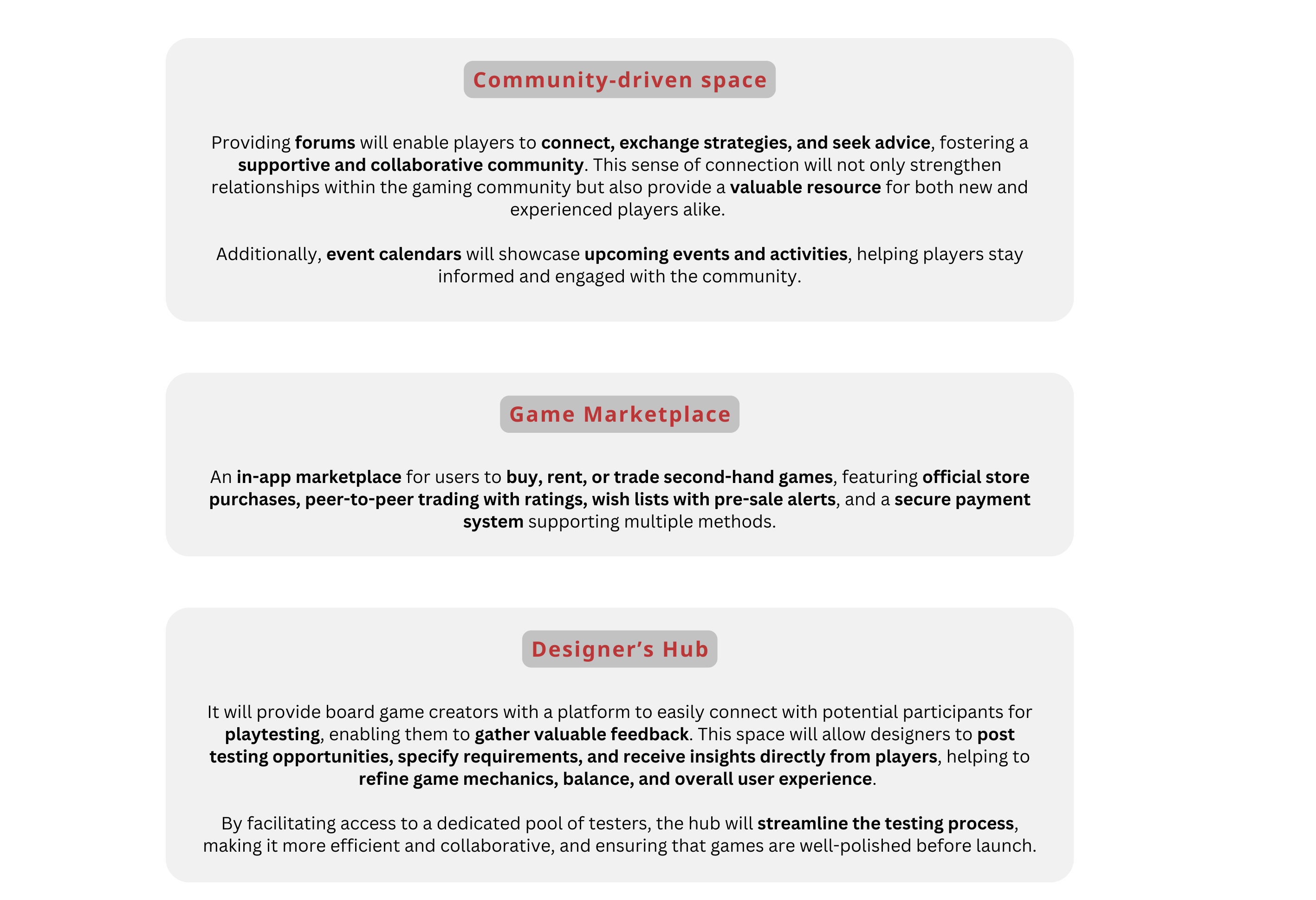Design Brief
The design brief for the capstone project focused on developing A technological solution that facilitates people’s engagement with their community. The project employed the Lean UX methodology, which prioritizes iterative design, rapid prototyping, and ongoing user feedback to achieve user-centered results.
Following an initial phase of desk research and collaborative brainstorming, our team identified the Board Games Community as the primary target audience for the proposed solution.
The Idea
Board Buddies is a mobile application designed for board game enthusiasts to foster community engagement by joining and hosting in-person events, while discovering and learning new board games through the platform’s resources.
Team:
Capstone Project group at UTS
Timeline:
August 2024 – November 2024
Contribution:
UX Researcher, UI Designer (Wireframing and Prototyping), Usability Testing

Our Approach
Guided by the Lean UX method, we began by identifying the core problem faced by the board game community through desk research and analysing existing products in the market. This led us to clearly define our problem statement and target audience. We then proceeded with prototype development, emphasizing rapid iteration and continuous refinement of the prototype through testing and feedback, before delivering a Minimum Viable Product (MVP).
Competitive Analysis
Board games have now evolved far beyond classics like Monopoly and Scrabble and are quickly regaining popularity. This renewed interest in tabletop gaming has been largely driven by the growth of the online community.
The Board Games market worldwide is projected to generate a revenue of US$9bn in 2025. It is anticipated to grow at a compound annual growth rate (CAGR) of 3.42% from 2025 to 2029 (Statista).
Below is a comprehensive table of 20 existing products, highlighting their features, target audience, and offerings, along with how our product differs from theirs.
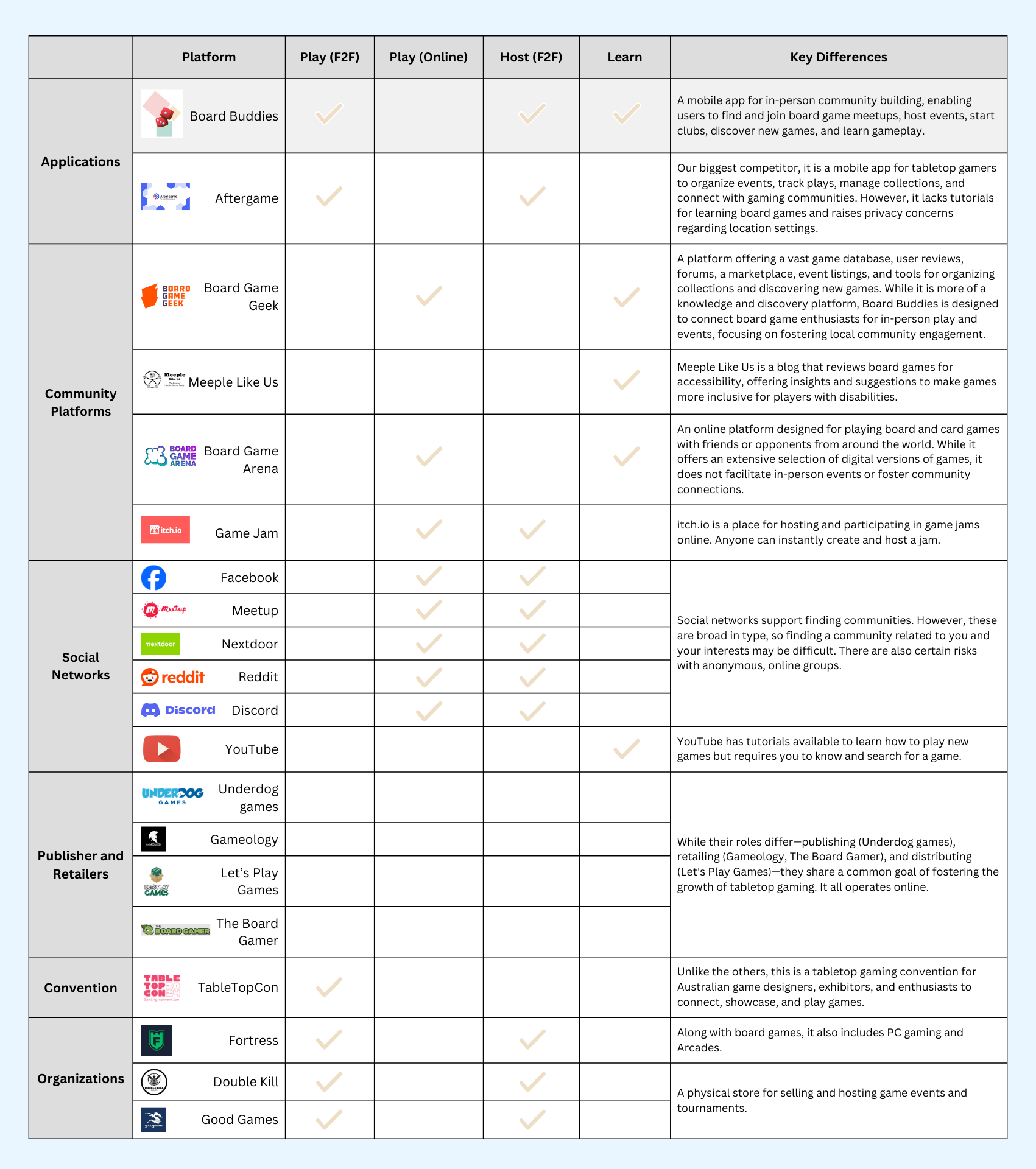
Problem Statement
Board Buddies connects the board game community by enabling users to play, host in-person events, and discover & learn board games through online engagement—all in one platform.
Although various platforms exist for board game enthusiasts—for discovering new games, learning how to play, engaging in discussions, connecting with other players, and hosting or attending events—none provide a unified experience that seamlessly integrates all these aspects. Board Buddies aims to fill this gap, offering an all-in-one platform where enthusiasts can connect, play, and learn in a single space.
In addition, Board Buddies will prioritize user safety through effective verification measures, ensuring a secure space for both event hosts and attendees.
Target Users

Persona
Proto-Personas were initially created based on the identified target users, integrating key demographic and psychographic attributes. These preliminary representations were then refined into Personas that provide a more comprehensive understanding of users’ technology use, aspirations, motivations, and concerns.
Player
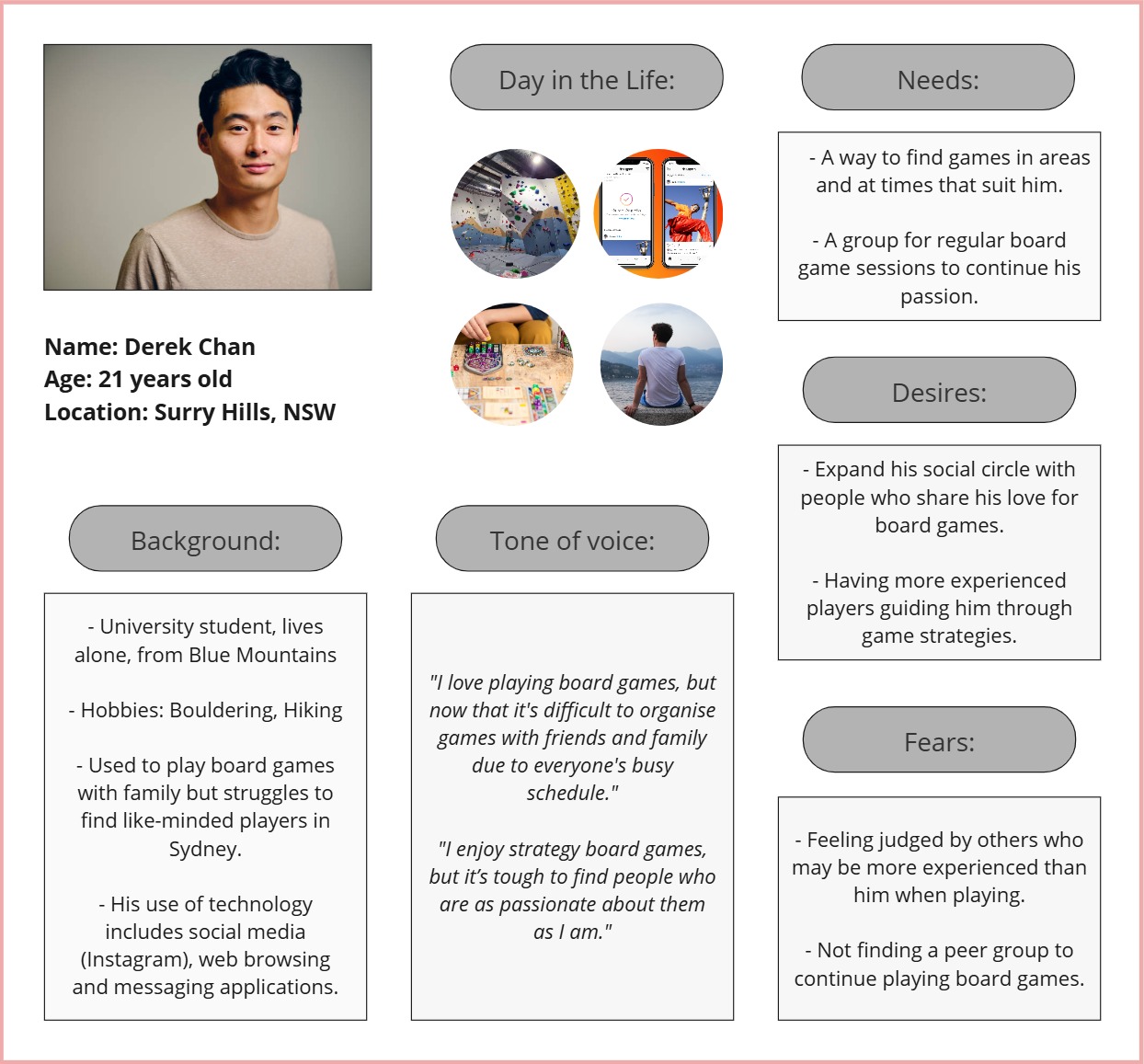
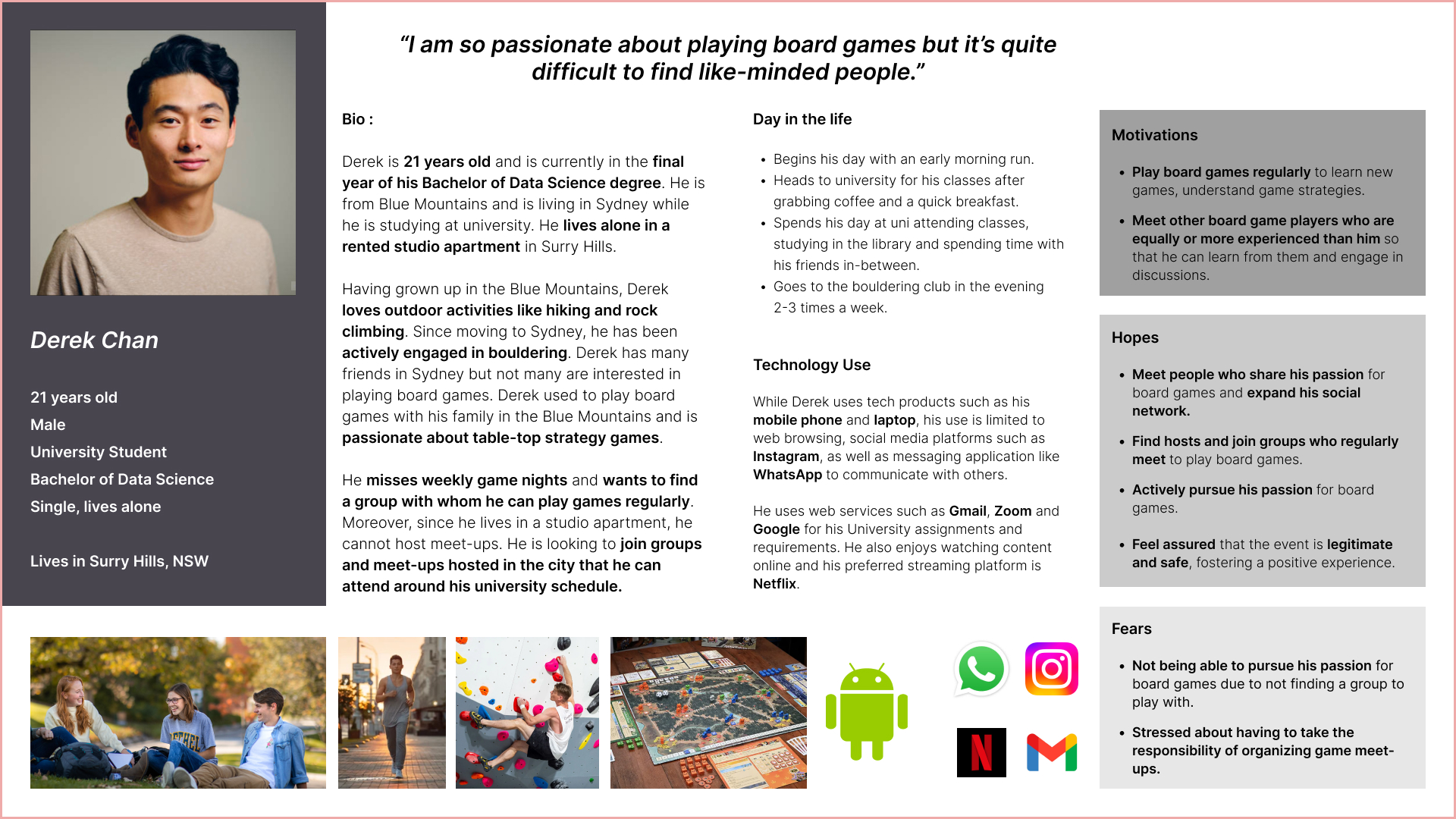
Host
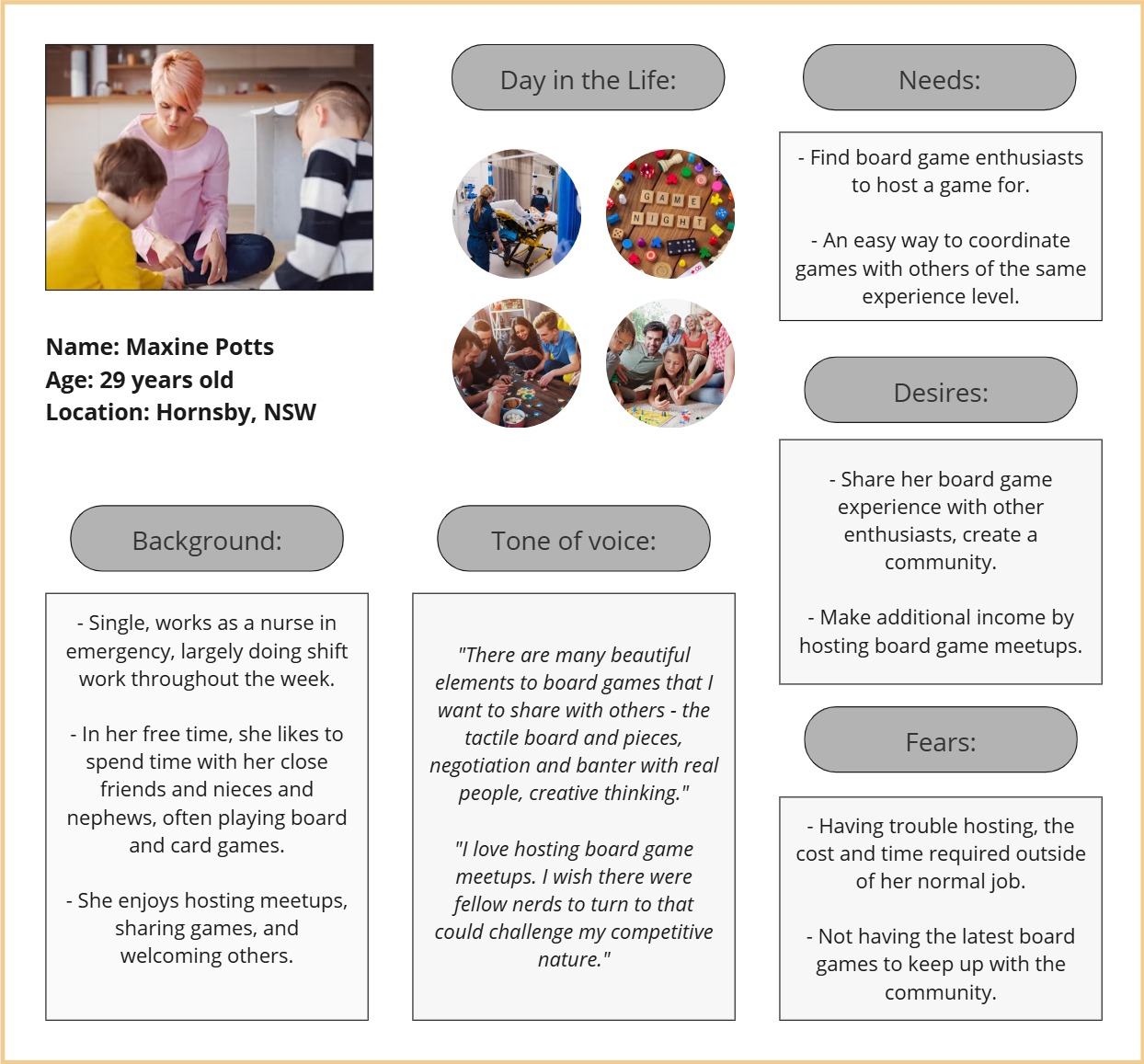
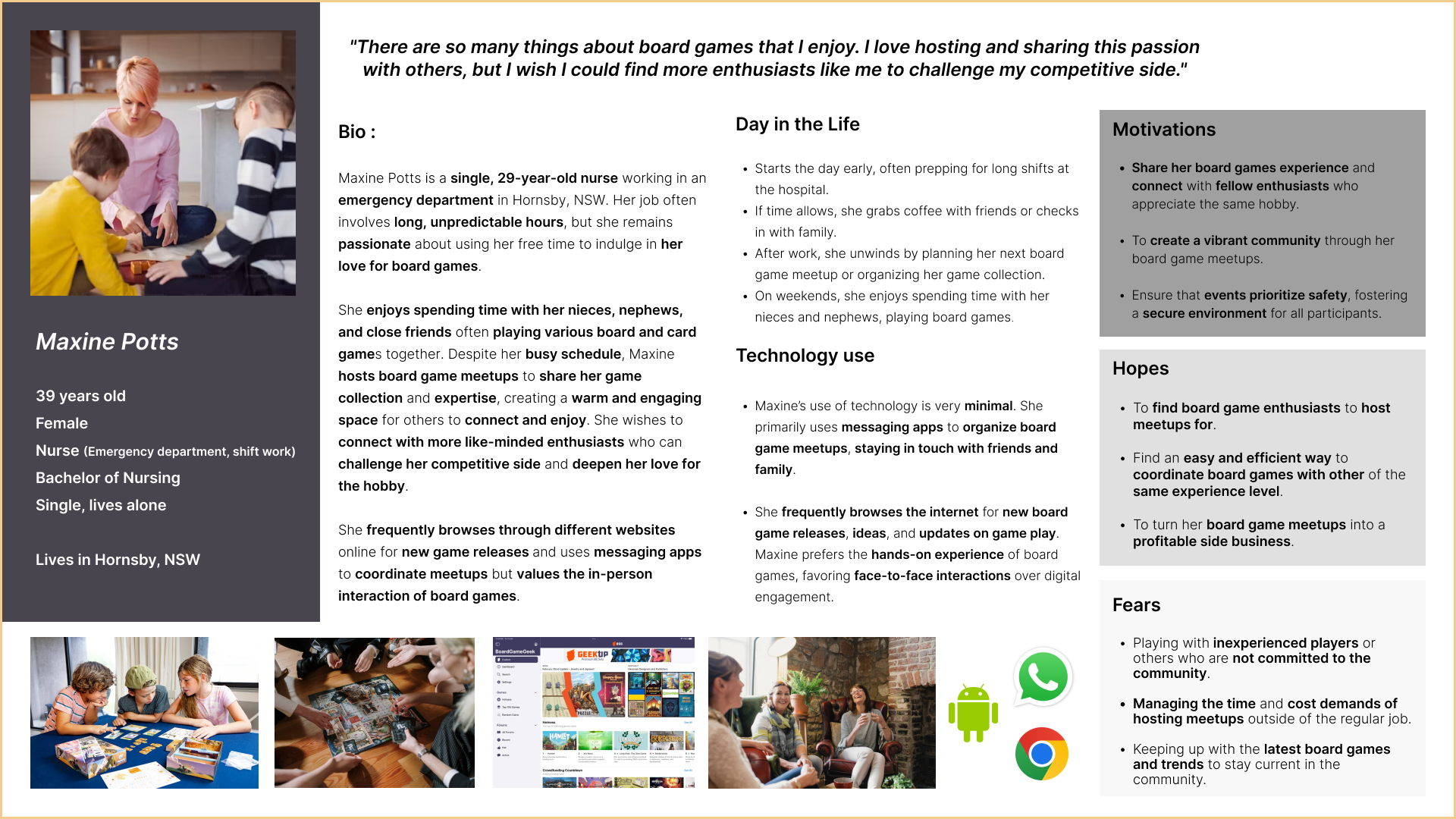
Newbie
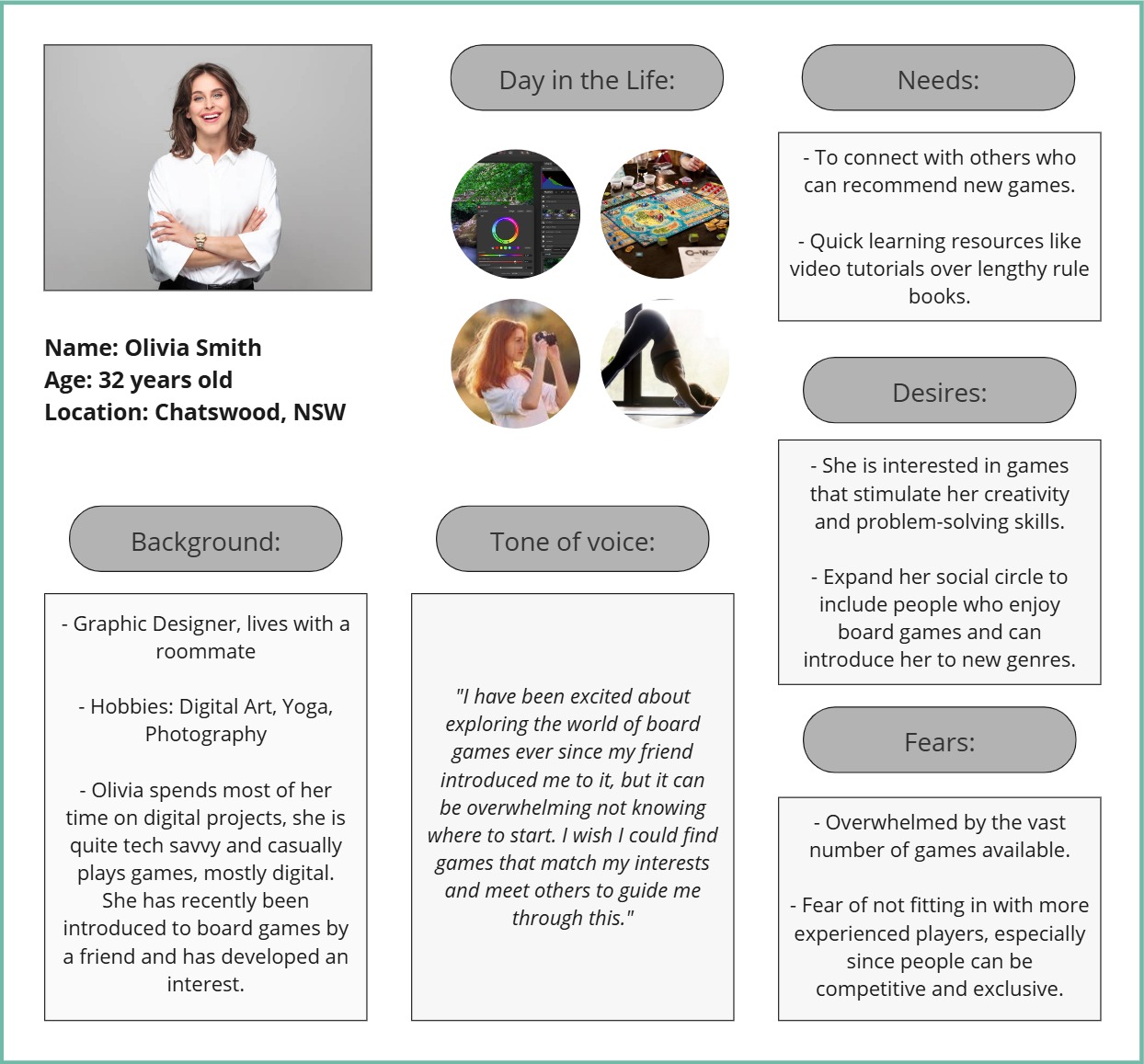
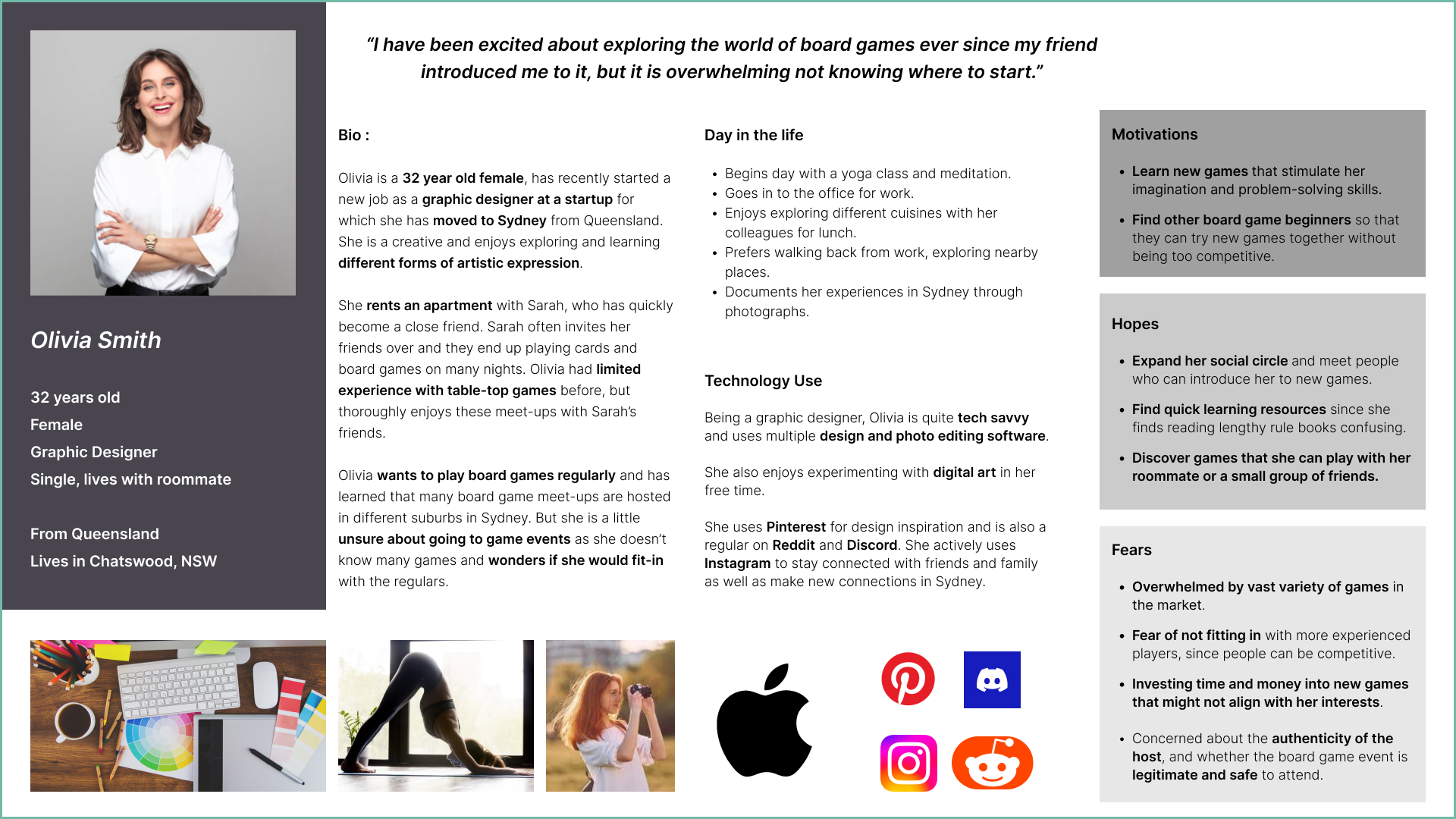
Prototyping
Our approach to developing the MVP was methodical and well-organized. We began by creating a Low-Fidelity Prototype to establish the application’s core functionality and structural layout. This initial phase allowed us to visualize the app’s basic features.
Following this, we progressed to a Mid-Fidelity Prototype, where we refined the user interface and flow. At this stage, we conducted a Nielsen’s Heuristic Evaluation, which helped identify usability issues and refine the design further in preparation for Usability Testing. The insights gained from these tests informed additional design decisions.
Finally, we developed the High-Fidelity Prototype, integrating colour schemes, images, and other visual elements. The aim was to craft a playful and engaging design that aligned with the board game theme, ensuring both aesthetic appeal and user experience.

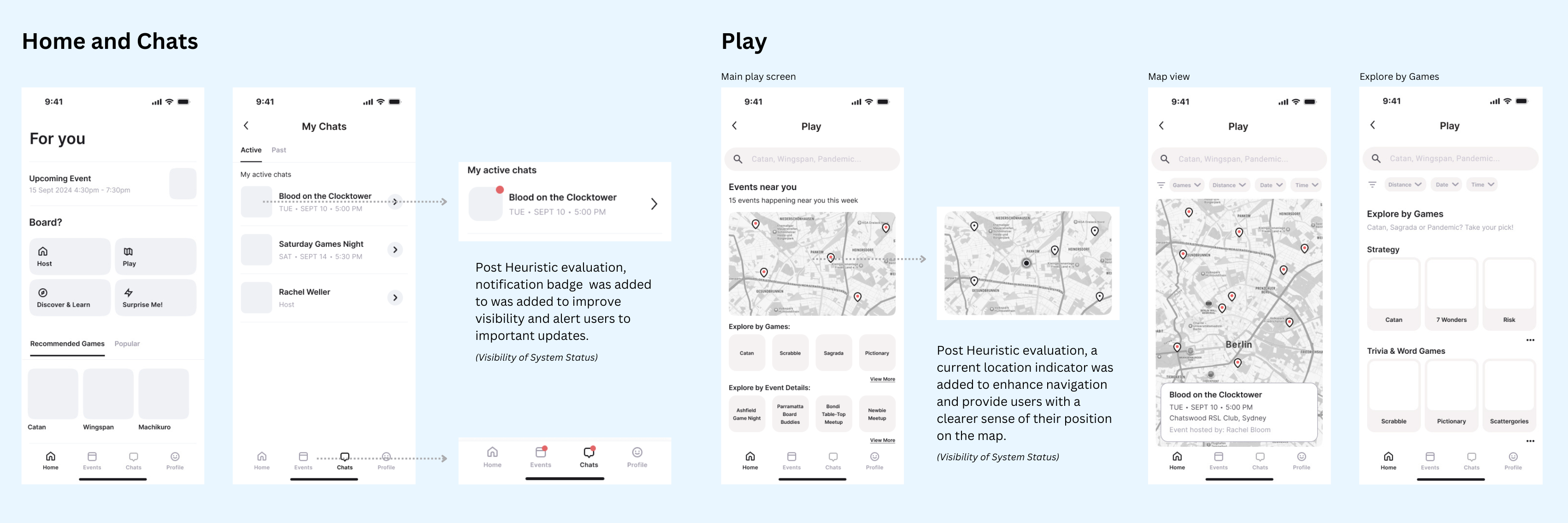
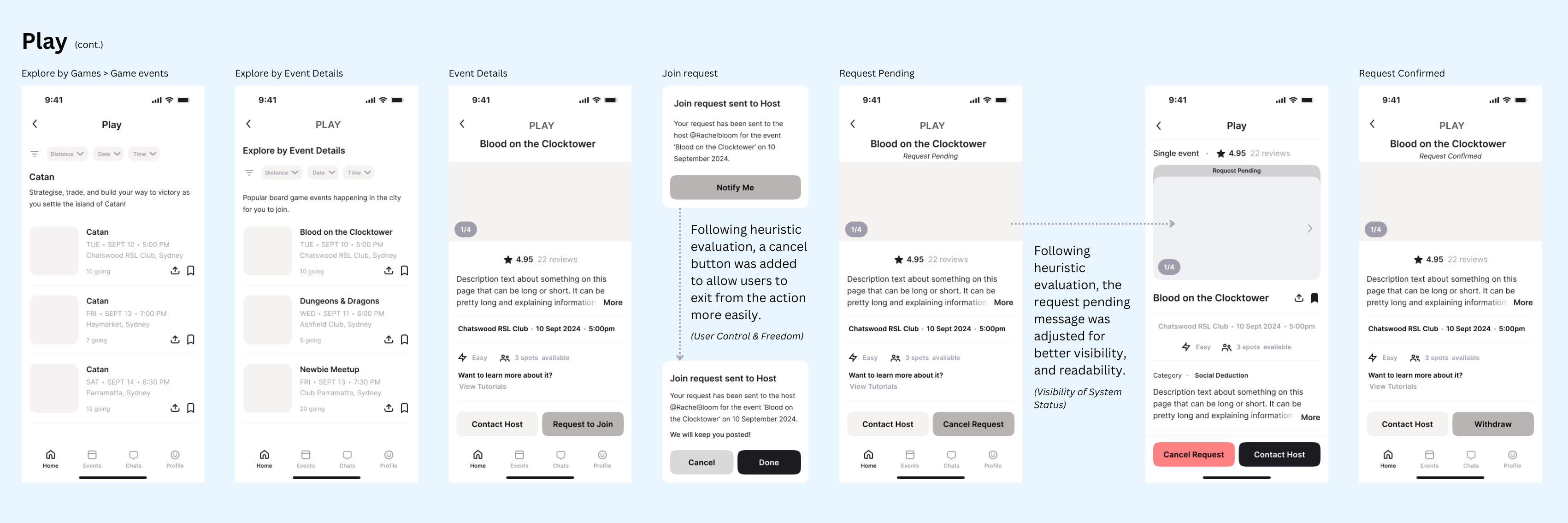
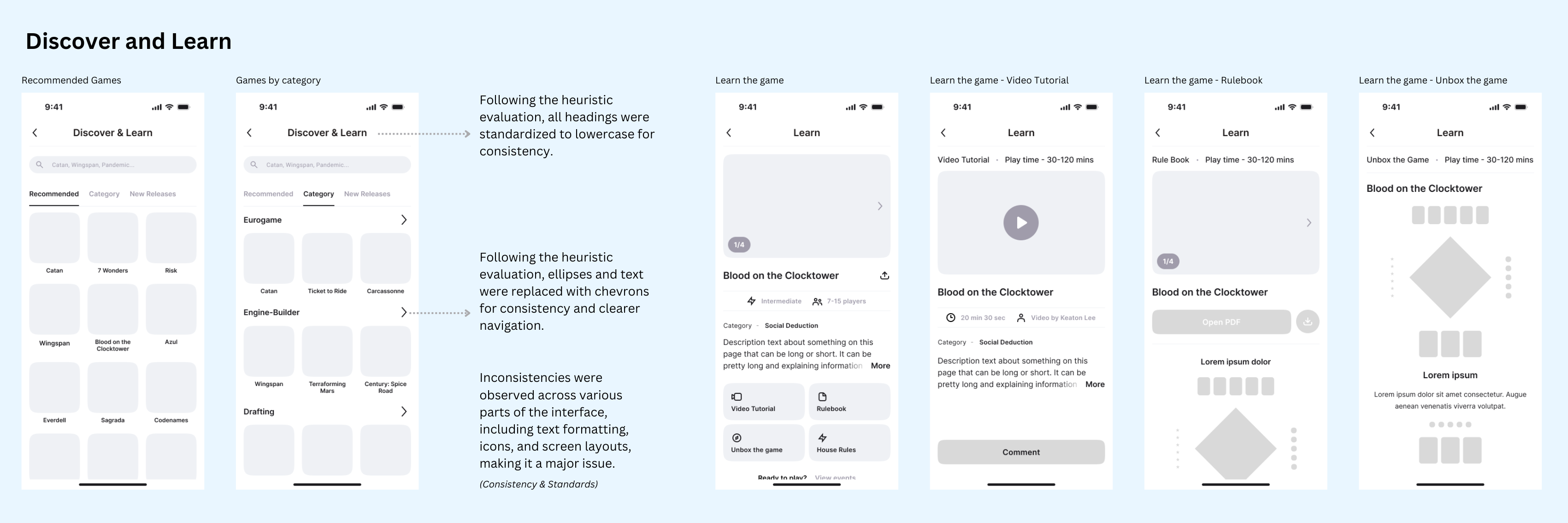
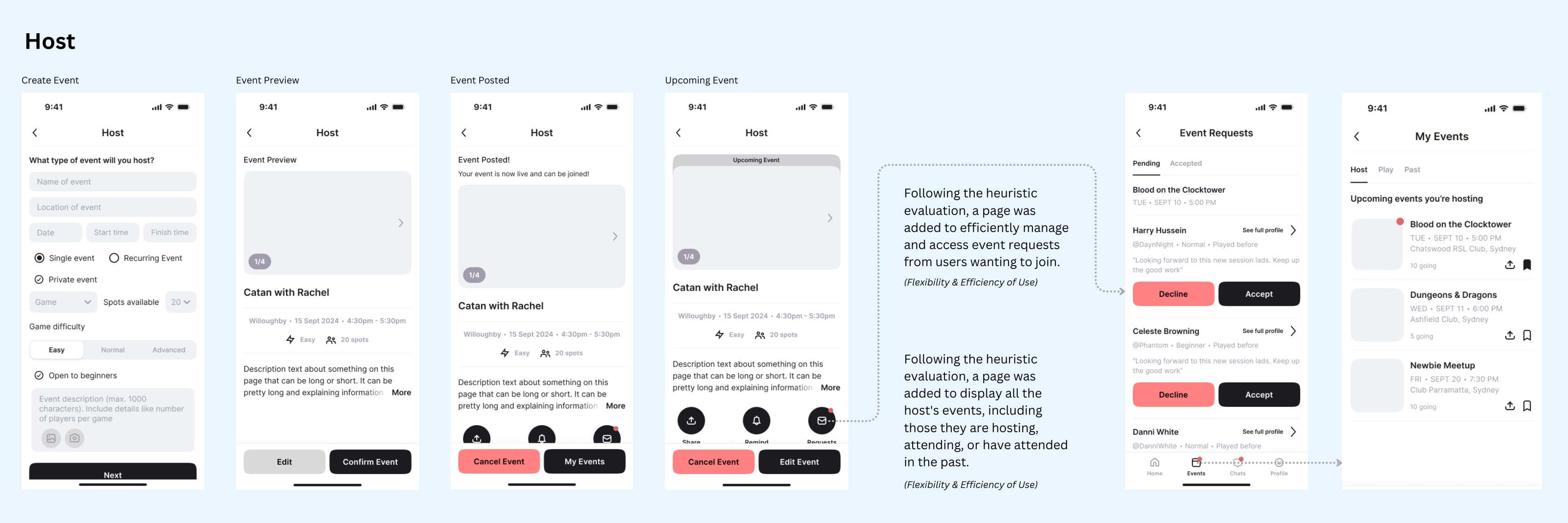
GOOB (Getting Out of the Building)
As part of our ‘Getting Out of the Building’ (GOOB) approach, we actively engaged with potential users to validate our assumptions and gather meaningful feedback. We structured our usability testing process into three key phases to ensure methodological rigor and consistency in data collection.
First, we asked Pre-Usability Testing questions to understand users’ board game experience, preferences, and expectations.
Next, we asked participants to complete a series of Usability Testing tasks to ensure each group member evaluated the same key aspects. This consistency enabled us to compare findings across users, making it easier to identify patterns and recurring themes.
We followed up with Post-Usability Testing questions to capture users’ experiences, gather feedback, and identify any challenges they faced while navigating the screens. This step helped us recognize what worked well and pinpoint areas for improvement.
Participants were recruited from local board game clubs, Facebook and WhatsApp groups, and personal networks, ensuring a diverse mix of engaged board game enthusiasts.

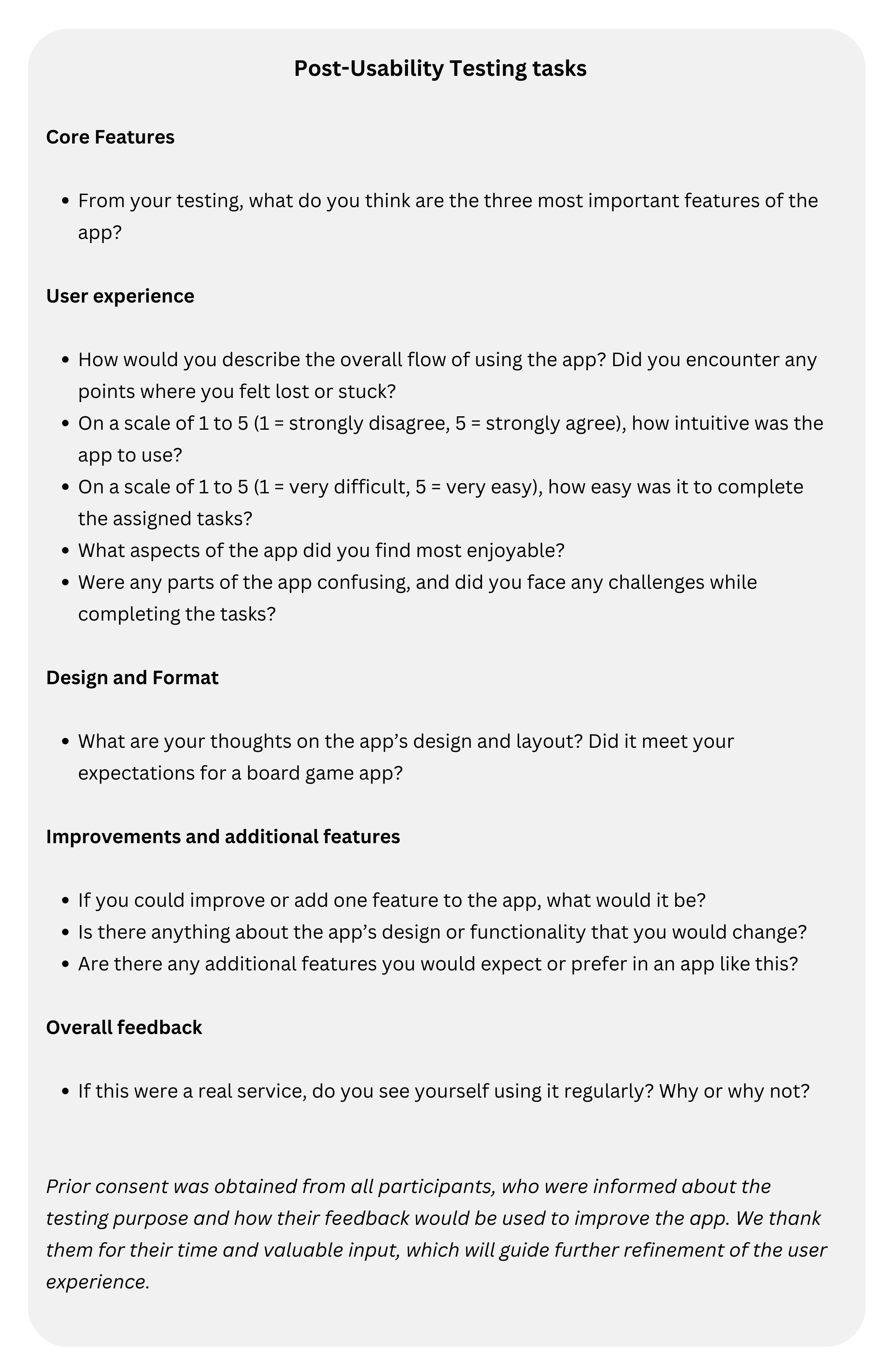
Key Insights
The group conducted 10 interviews and usability tests. Each member individually coded the data before coming together for Affinity Diagramming to identify key themes. This was an iterative process, repeated over multiple rounds to refine and organize insights.
We identified key insights (summarised below) through this process. While critical ones were incorporated into the high-fidelity prototype, others were set aside as part of the future scope due to time constraints.


Design System
I created a design system, incorporating reusable UI elements, accessible color palettes, and typographic hierarchy to streamline development and maintain visual consistency throughout the application.
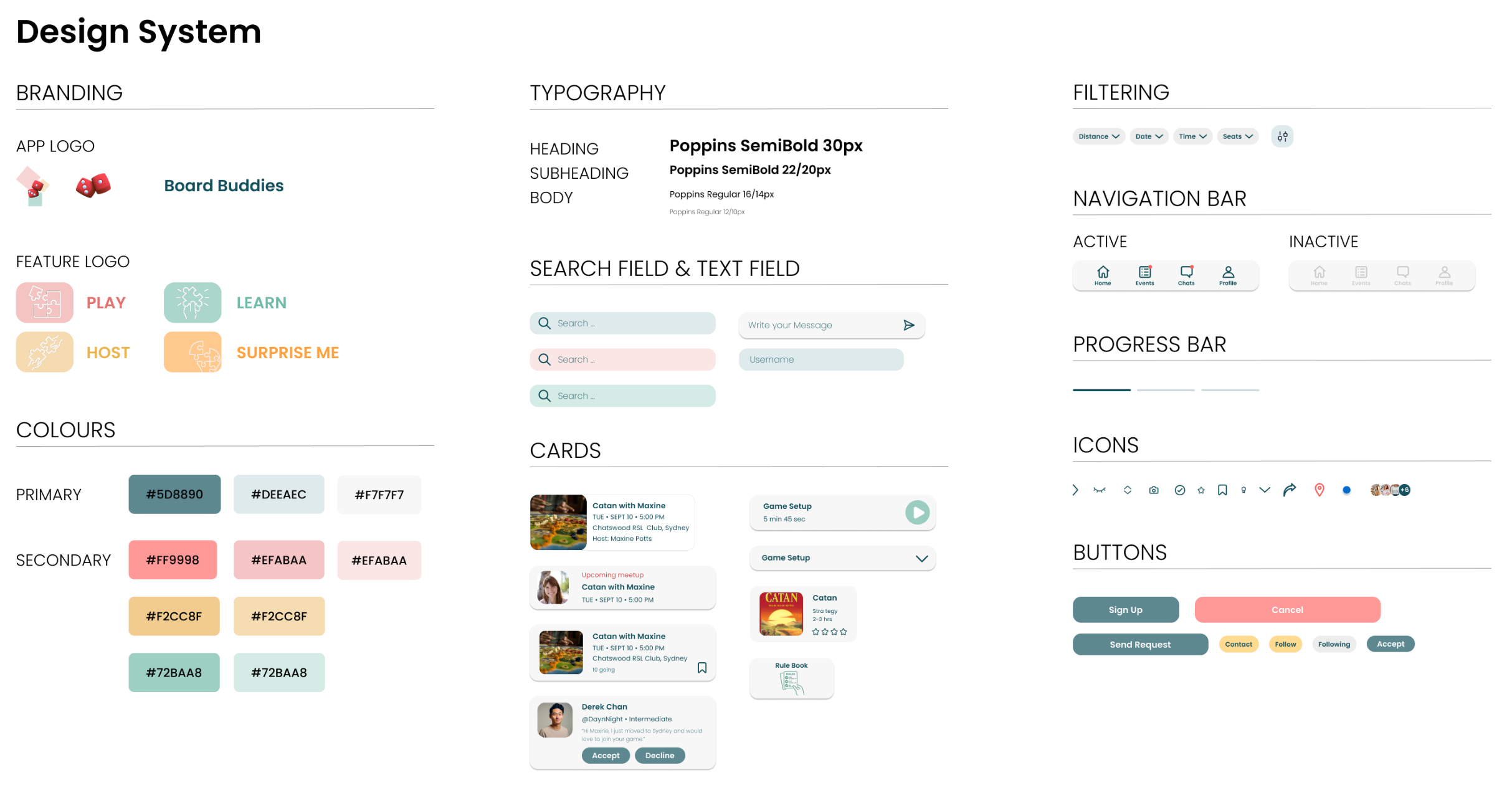

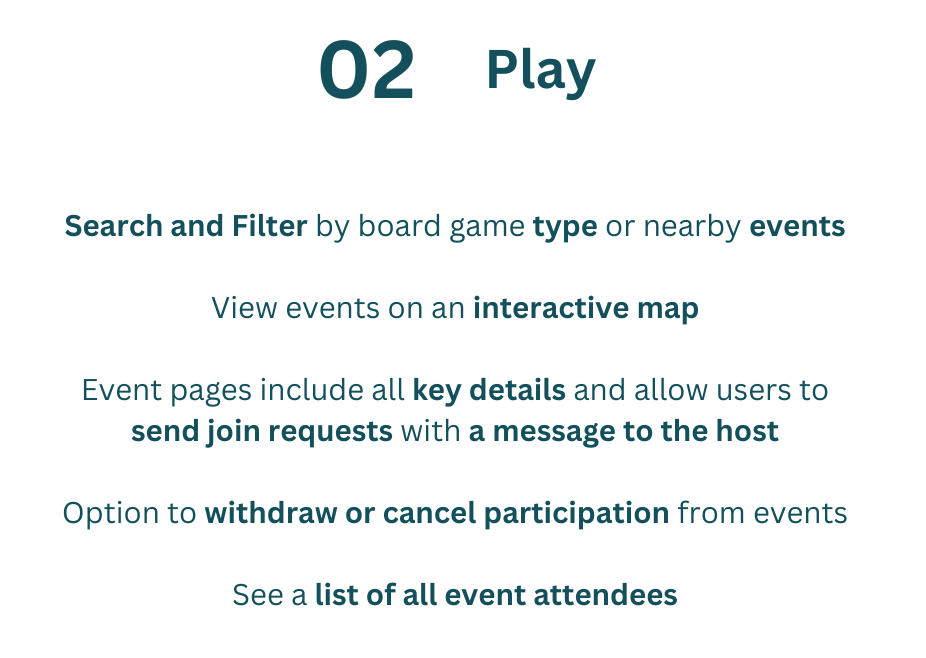
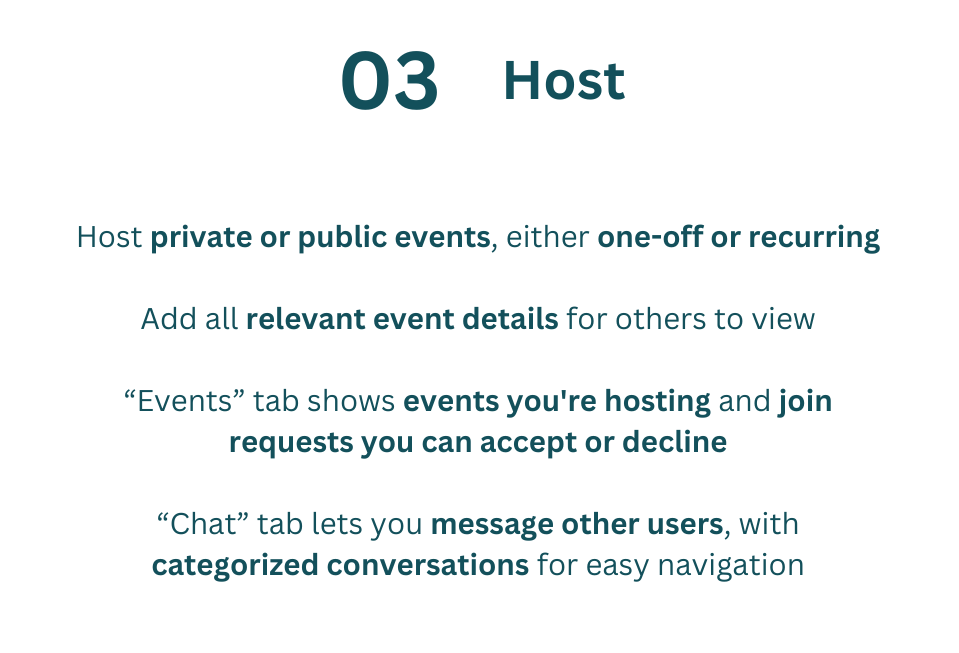
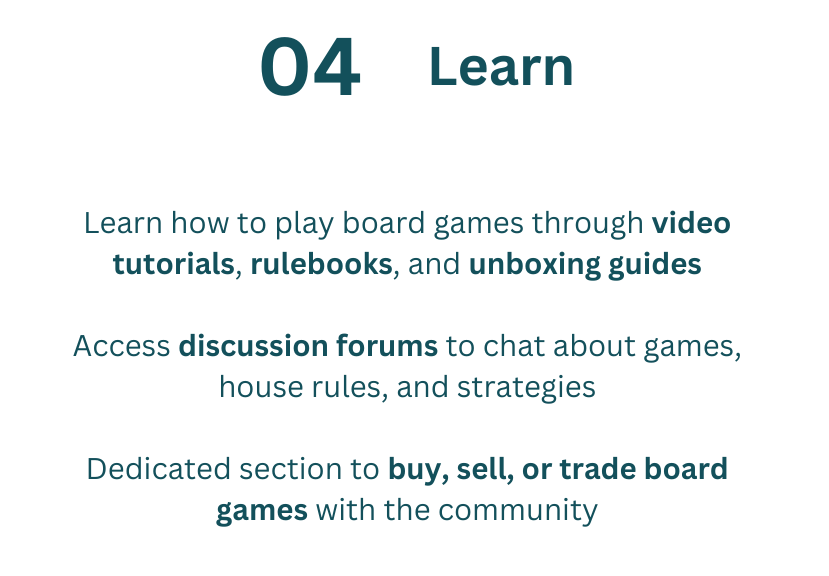
The Business Model
Board Buddies will pursue multiple growth and monetization strategies, including paid events, partnerships with game venues, sponsorships from manufacturers, premium memberships offering exclusive features and benefits, merchandise sale, and advertising and promotions.
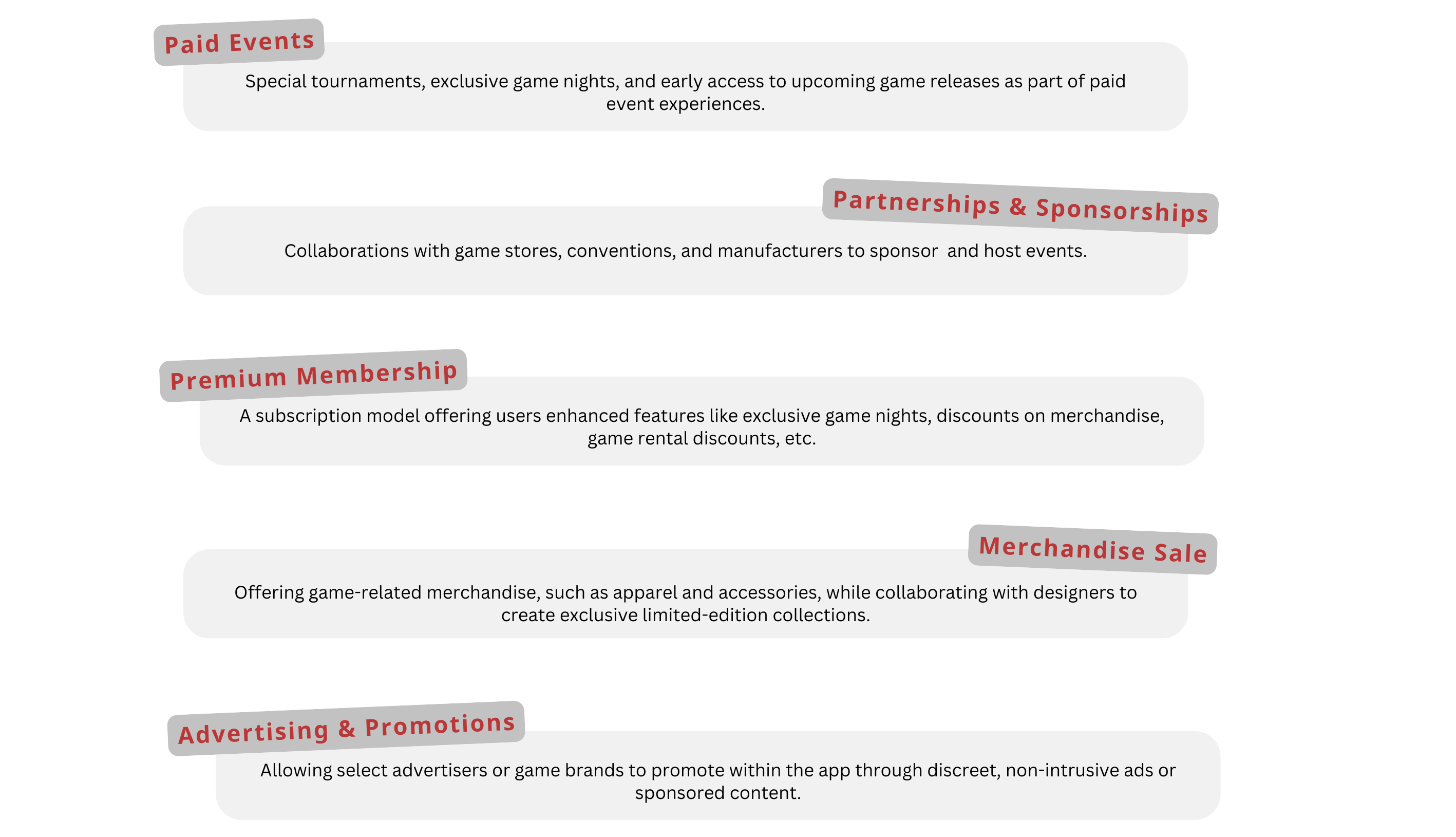
Going Forward
Board Buddies was a valuable learning experience that emphasized the importance of Lean UX as an approach. It taught me how critical it is to iterate quickly, gather user feedback early, and make improvements based on real-world insights. I gained a deeper understanding of balancing feature development with user needs.
As a designer, I often assumed certain information or features would be intuitive to users, only to realize that what seemed obvious to me was frequently overlooked or misunderstood by them. Even the most innovative and valuable features can quickly become irrelevant if users are unaware of their existence or struggle to understand how to use them effectively. This highlighted the importance of clear communication, intuitive design, and thorough user testing to ensure that key features are both discoverable and accessible.
